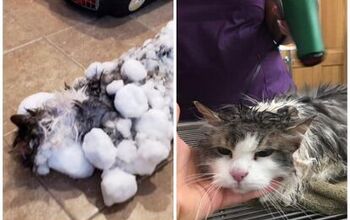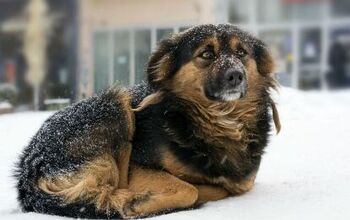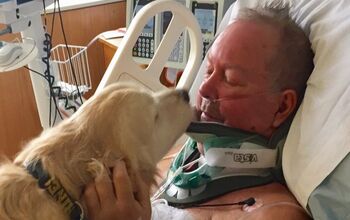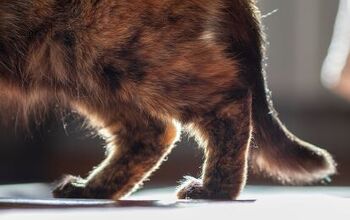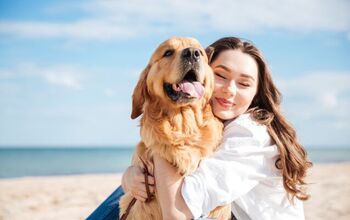Winter SOS: Cold Weather Safety Tips for Dogs

It doesn’t take much to kick those of us north of the border into full winter mode. An errant snow flake, a sale on snow tires or the neighbor putting up Christmas lights in late October. We’re like the Olympic sprinter waiting for the sound of the starter’s pistol to send us off readying our homes and vehicles for the cold winter months ahead.
But how much thought do we put into the safety and comfort of our pooches? We all know not to leave them outdoors too long and to protect tender pads when walking on salty roads, but is that enough and what do we do when in spite of our best efforts, weather related injuries occur?
These proactive and reactive tips will help ensure your pooch has a safe winter season.
- Bring Your Pet in During Cold to Freezing Temperatures
Even if he loves the colder weather and has a good winter coat; bring him in. Hypothermia is life-threatening, results from extended exposure to cold and compromises your dog’s central nervous system. Strong shivering, shallow breathing or lethargy are the symptoms and require urgent action. Immediately warm blankets (think clothes dryer or radiator) and wrap him up with a covered hot water bottle against his abdomen. Give him warm fluids to drink, keep him in a warm room or space and contact your vet.
Related: How to Keep Senior Dogs Comfortable This Winter
- Change Your Grooming Routine During Colder Months
If his upkeep includes regular clipping or shaving opt for a longer cut (or none at all). If you bathe your pooch at home make sure he is completely dry before taking him out for a walk – a dry shampoo is a good alternative. Use a quality paw wax prior to each walk as it forms a protective barrier between pads and salt / ice preventing dry, cracked paws. If your little guy’s feet do become sore, ask your vet to recommend a good pad moisturizer. Don’t use a hand moisturizer as this can soften pads and make them susceptible to further injury.
Related: Muttluks, Pawstick and PawMagik Paw Balms
- Enforce Obedience
Your pooch needs to heed your commands during winter. Terms like “leave it” can save his life as antifreeze is a sweet smelling and tasting chemical that is deadly to any pet that stops to sniff and lick when out for his walk. If this does happen, induce vomiting with one teaspoon hydrogen peroxide for each five pounds of weight (maximum 3 teaspoons) within the first two hours, then get him to a your vet for treatment. For those who like to go off-leash in remote areas, your pooch can quickly lose his scent and become lost on a snowy trail or wander onto a partially frozen lake. Make sure calling “come” or his name, is respected.
- Prepare for Walks
Pooches with a shorter coat, who are older or have compromised health need jackets. Salt and ice can result in cracked pads so get Rover used to donning booties and getting a good wipe-down when back inside. Plan shorter routes to avoid frostbite and for really cold days, consider a pee pad so he can stay indoors. Frostbite is ice crystals forming below the skin’s surface and it appears as blistering, swelling or even blackened patches on the ears, pads or scrotum. If it does occur, gently warm the affected areas using warm water compresses or by soaking in warm – not hot -water. Pat dry, don’t massage, and keep your pooch from licking the affected area before you can get him to your vet.
- Ready Your Outdoor Pooch for the Elements
If bringing your dog indoors is not possible you need to set him up for comfort during those icy days and nights. His shelter needs to be water-proof, draft-proof and heated by one of the many options available including the Farm Innovators. His bedding must always be dry so must be checked frequently and because an outdoor dog can burn up to 30% more calories than an indoor dog his food levels need to be increased accordingly. To avoid freezing, food and water bowls need to be heated and Farm Innovators offers several options.

Sharing space with three seriously judgy Schnoodles and a feline who prefers to be left alone. #LivingMyBestLife
More by Mary Simpson






